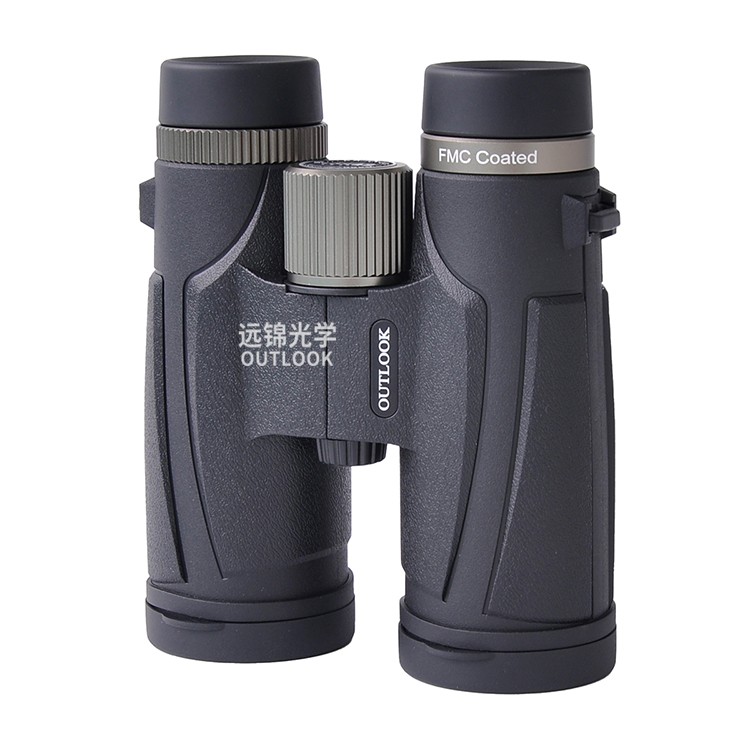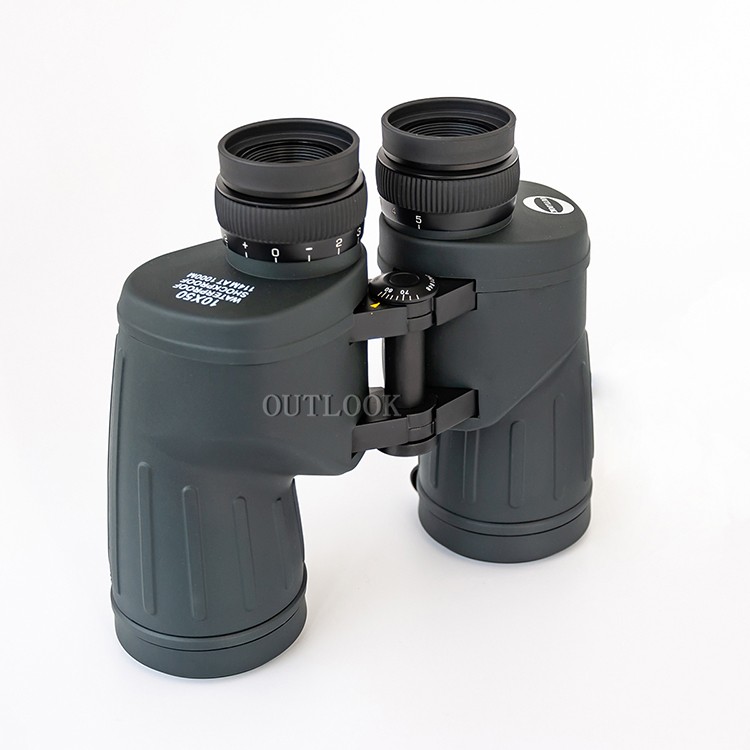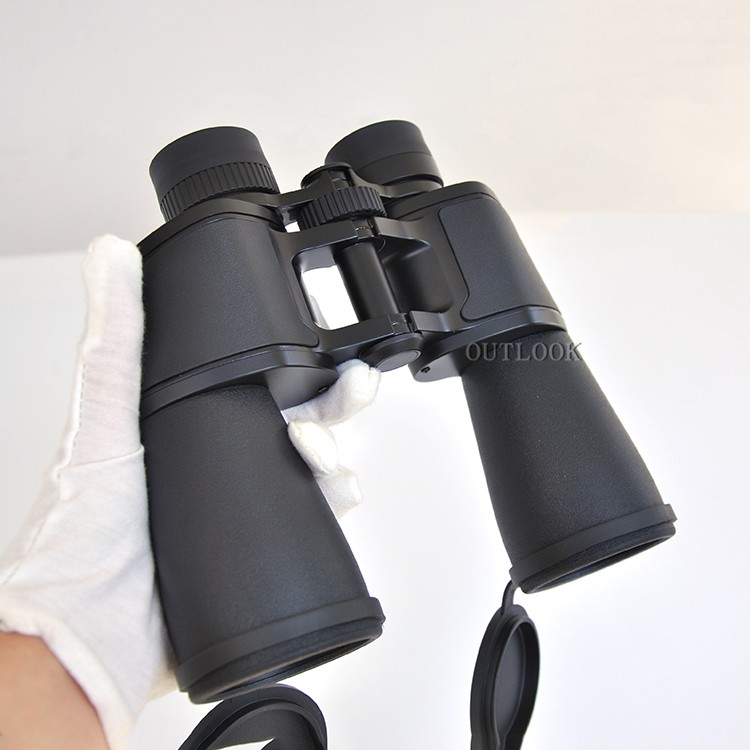The main differences between 10x42 lightweight binoculars and 10x50 compact binoculars lie in light intake, size, weight, and applicable scenarios. Below is a detailed comparison:
1. Light Intake and Brightness
50mm aperture: The larger objective lens allows more light intake, resulting in brighter images in low-light environments (such as dusk and night), making it suitable for astronomical observations or low-light conditions.
42mm aperture: Less light intake, but sufficient for everyday use (such as birdwatching and traveling), with a comparable performance to a 50mm in bright light.
Calculation Example:
10x50 compact binoculars: Exit pupil diameter = 50/10 = 5mm (suitable for nighttime observation).
10x42 lightweight binoculars: Exit pupil diameter = 42/10 = 4.2mm (suitable for daytime or slightly dimmed conditions).
2. Size and Portability
10x50 compact binoculars: Larger and heavier, it can be tiring to hold for extended periods, typically requiring a tripod.
10x42 lightweight binoculars: Lighter, suitable for handheld observation and more convenient for outdoor use.
Typical Weight Comparison:
10x50 compact binoculars: Approximately 1kg
10x42 lightweight binoculars: Approximately 700-900g

3. Suitable Applications
10x50 compact binoculars:
Astronomy: Brighter, suitable for deep-sky observation
Birdwatching/Travel: Slightly heavier
Low-light: Better performance
Stability: Usually requires a tripod
10x42 lightweight binoculars:
Astronomy: Barely usable, but not as bright as the 50mm
Birdwatching/Travel: Suitable for long-term handheld use
Low-light: Slightly weaker, but sufficient for daily use
Stability: More stable when handheld
4. Price Difference
For the same brand and optical quality, 10x50 compact binoculars is generally more expensive than 10x42 lightweight binoculars due to the larger lens and higher material costs.
5. Recommended Choices
Choose the10x50 compact binoculars:
Primarily for astronomy or low-light observations
Can tolerate a larger size and weight
Higher budget
Choose the 10x42 lightweight binoculars:
Daily birdwatching, travel, and sporting events
Need lightweight portability
On a limited budget but still want good optical quality
High-end Model Comparison:
Yanjin OUTLOOK 10x50 compact binoculars(Astronomy)
Yanjin OUTLOOK 10x42 lightweight binoculars (Image Stabilization, Suitable for Birdwatching)

Choosing between a 10x42 lightweight binoculars and 10x50 compact binoculars depends on your specific use and scenario. Here are some key comparisons and recommendations:
1. Optical Performance
Brightness:
The 10x50 compact binoculars: With a larger objective lens (50mm), it allows more light in, resulting in brighter images in low-light conditions (such as dusk and overcast skies), making it suitable for astronomy and low-light conditions.
10x42 lightweight binoculars: Slightly less bright, but adequate for daytime use and more compact.
Sharpness and Chromatic Aberration:
Both lenses have the same magnification (10x), but the larger aperture of the 10x50 compact binoculars may result in more pronounced edge aberrations if the lens quality is average (especially in lower-priced models). The 10x42 lightweight binoculars is generally easier to control optical quality.
2. Portability and User Experience
Weight and Size:
10x42 lightweight binoculars: Lighter (typically 100-200 grams lighter), suitable for handheld observation, travel, or hiking.
10x50 compact binoculars: Larger, prone to fatigue when held for extended periods; tripod use is recommended.
Exit Pupil Diameter:
The 10x50 compact binoculars has an exit pupil diameter of 5mm (50 ÷ 10), suitable for nighttime observation with a dilated pupil; the 10x42 lightweight binoculars has an exit pupil diameter of 4.2mm, more closely matching the human eye's pupil size (2-4mm) during daytime. 3. Suitable Applications
Choose the 10x50 compact binoculars:
Astronomical observations and low-light environments (such as stargazing and birdwatching at dusk).
For fixed-site use (such as balcony observation, with a tripod).
Choose the 10x42 lightweight binoculars:
For mobile use, such as daily birdwatching, travel, and sporting events.
For those seeking portability and handheld stability (especially for extended use).

4. Other Factors
Price: Within the same brand, the 10x50 compact binoculars may be slightly more expensive, but the difference is not significant.
Coating Quality: If the 10x50 compact binoculars has poor coating (such as a budget model), its clarity may be inferior to that of the 10x42 lightweight binoculars.
Tripod Mount: The 10x50 compact binoculars typically requires a tripod mount, so check for a tripod mount.
Summary and Recommendations
Prefer the 10x42 lightweight binoculars: If your use is primarily daytime or you require portability (such as for outdoor activities).
Prefer the 10x50 compact binoculars: If you frequently use it at night or can tolerate a slightly larger size (such as an astronomy enthusiast).
Test wear comparison: Experience the actual hand-held comfort, especially the balance of 10x50 compact binoculars.
10x42 lightweight binoculars 10x42 lightweight binoculars

